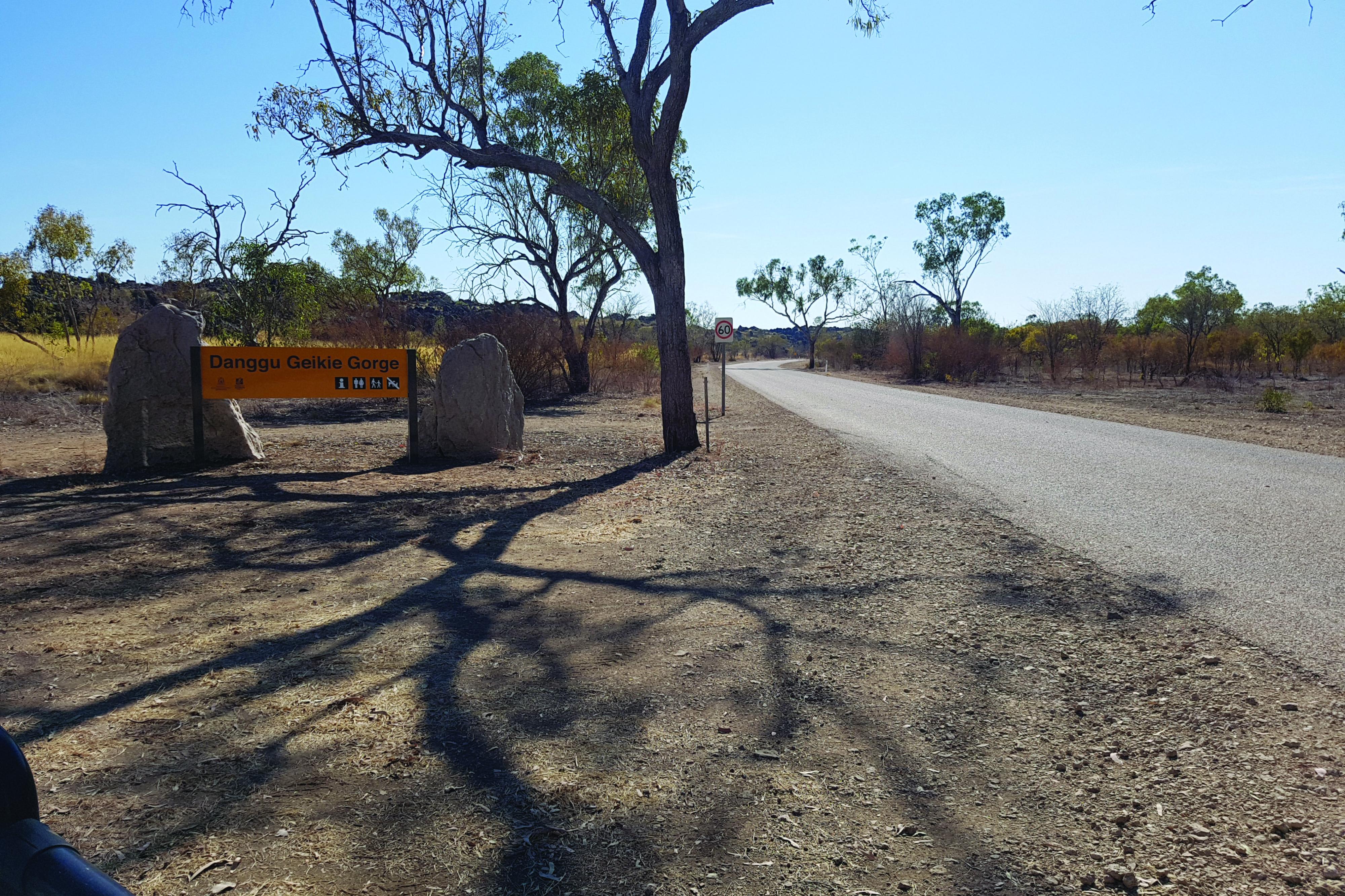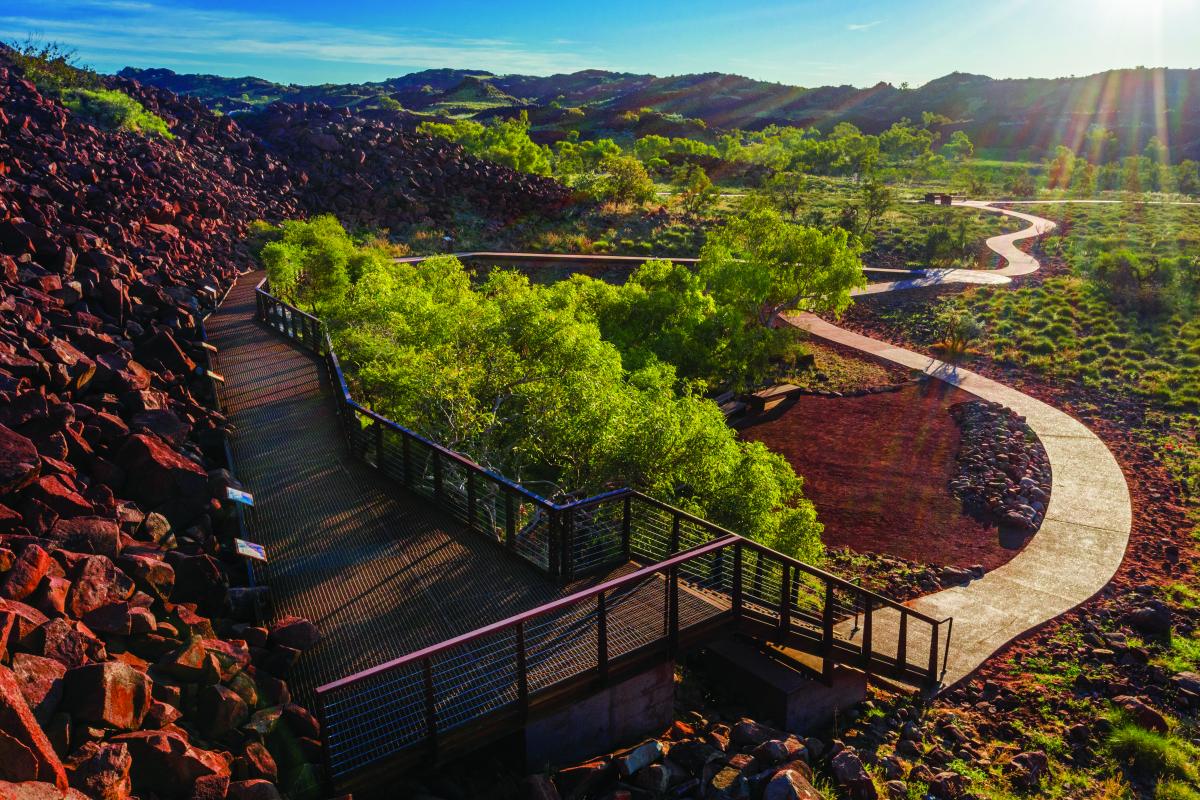What's in a name?
Juliet Capulet once asked what's in a name, questioning the arbitrary labelling of a family name that forbade her romance with Romeo. While all is fair in love and war, the naming of places is anything but arbitrary.
A name represents connection, an identity and makes a first and lasting impression. Names of geographic places such as national parks, picnic and camping areas, and other natural assets are very meaningful to local communities.
For park visitors, including emergency services, names are a reference to describe the location or 'address' and identify where a place is and guide visitors to and around the park.
For Aboriginal peoples, names of places are intertwined with lore and spirituality and are intrinsically attached to their understanding of its history, culture, rights and responsibilities to the land. Names feature in stories and songs, traditionally passed down through oral histories rather than written language.
Each traditional owner group has their own words for how they describe their connection to the land and how it makes them feel. What is shared is the deep, entrenched notion that country, health, spirit and wellbeing are all connected to land and specific places.
As an example, the relationship of Yawuru people to country is expressed through liyan. Liyan comes from Yawuru peoples' connection to country, ancestors and Yawuru way of life. It reflects a sense of belonging to Yawuru society, and represents the feeling people hold, individually and collectively, particularly when they are on their country.
Mabu liyan (good liyan) expresses Yawuru peoples' emotional strength, dignity and pride. The guiding principle for good management of Yawuru country is that Yawuru people have to maintain good, clear liyan with the country within the modern, ever-changing world.
Nomenclature needs
In Western Australia, the Geographic Names Committee (GNC) provides independent advice to the Minister for Lands on geographical naming issues, taking into account the different points of view, from local communities, professional institutions, the Aboriginal community and government agencies. The GNC applies policy and procedures for the naming of geographical places and features.
Landgate is the custodian of the State's nomenclature database, which contains official names and coordinates of geographic features in Western Australia including the official spelling of the name, feature type, classification, derivation, map number, coordinates and any alternative and historical names.
When geographical features managed by the Department of Biodiversity, Conservation and Attractions (DBCA) are being named in WA, DBCA's Parks and Wildlife Service has corporate guidelines and a committee that ensures new names are, wherever possible, short; confined to one word; meaningful and appropriate; and specific to the area, feature or asset (for example, a local Aboriginal name, name of an explorer, pioneer, settler or the name of a person who has performed outstanding scientific or community service), in compliance with the GNC policy and procedures.
Aboriginal names
In recent years, Aboriginal engagement has expanded and developed to involve almost every aspect of the department's work including reserve creation, science, recreation, tourism operations, conservation and land management, fire management, wildlife management and heritage protection, much of which is being enabled through formal and informal joint management and partnership initiatives.
Cultural protocols are closely adhered to when traditional names are being provided to areas, features and assets managed by the department.
Aboriginal people are involved and consulted as much as possible for the naming of new conservation areas and their features. For many years, the Parks and Wildlife Service has been applying Aboriginal names to parks and geographical features within parks as part of the process to establish joint management of parks and reserves.
The use of Aboriginal names is strongly encouraged, and names are provided at the recommendation of an Aboriginal corporation and confirmed by a language centre where available. In some areas, agreements with the traditional owners have been made to assist in identifying names, such as with the Miriuwung Gajerrong people near Kununurra, Yawuru people near Broome and Bunuba people near Fitzroy Crossing.
This use of Aboriginal names has gained momentum in more recent years, particularly in the Kimberley region. Bunuba, Wilinggin and Balanggarra names have been approved for many parks. In Danggu (Geikie Gorge) National Park, Danggu means the area where the water is very deep under the cave. In Bandilngan (Windjana Gorge) National Park, Bandilngan is the name of the water pool within the gorge in which sits a large boulder. The pool is Rayi spirit site, where Rayi spirits come to women in their dreams, and the place where women would birth their children. In Dimalurru (Tunnel Creek) National Park, Dimalurru is the name of the spring inside the gorge. Niiwalarra is the traditional name of Sir Graham Moore Island, which is now referred to as Niiwalarra Island.
Looking back
WA's natural places were named by Aboriginal peoples long before the arrival of Europeans, but during colonisation names of explorers, settlers and royalty were given to many places, parks and features.
In July 2020, the then Hon. Ben Wyatt MLA, the Minister for Lands and Aboriginal Affairs, declared that King Leopold Ranges were officially renamed Wunaamin Miliwundi Ranges, incorporating Ngarinyin (Wunaamin) and Bunuba (Miliwundi) traditional names.
"It has troubled me for years that an extraordinary area of Western Australia should be named in honour of a person who is widely regarded as an evil tyrant with no connection to our State," Minister Wyatt said.
"The traditional owners of the region have always known the ranges by their own name, so, it's momentous to finally remove reference to King Leopold II and formalise the name."
While some retrospective name changes have been requested to remove a reference to a painful part of history, some are simply in response to local community support as a sign of respect for the traditional owners.
In 2018, Bramley National Park, north-east of the town of Margaret River, was renamed to Wooditjup National Park to reflect the area's significance to the Wadandi people. Wooditjup was formally adopted as the new name for the national park after consultation with traditional owners and the South West Boojarah Working Party.
Mundy Regional Park was named many years ago. Mundy (or Munday) was a leader of the Beelu (or Beeloo) people at the time of European settlement. The Beelu people occupied a district that was generally bounded by the Helena, Swan and Canning rivers.
Deep Gorge in Murujuga National Park has been named Ngajarli by the Ngarda-Ngarli, which means secret or sacred place.
Seeing double
There are some parks and assets around the State that carry dual names, for example Lalang garram / Camden Sound Marine Park in the Kimberley. Lalang-garram, now spelt Lalang-gaddam, is a Dambeemangarddee word meaning the saltwater as a spiritual place as well as a place of natural abundance. Park names will soon be changed to the new spelling.
Dual naming is the approach whereby geographical places or features are officially recognised by two distinct names, with the Aboriginal name appearing first, separated with a solidus (/) preceded and followed by a space. A dual name may be considered as an intermediary step in the transition to an Aboriginal name. In some instances, although the official name is an Aboriginal name, use of the old name is retained on signs and in publications as an interim measure until visitors become familiar with the new name. For example, Danggu National Park still includes Geikie Gorge on park signs, publications and websites.
Arguably the most famous name change was when the iconic Ayers Rock in the Northern Territory was renamed Ayers Rock / Uluru in 1993, before switching to Uluru / Ayers Rock in 2002 and today is commonly referred to simply as Uluru.
Moving forward
It is now standard practice for the naming of new parks and assets to have strong involvement from the Aboriginal community. This also comes at a time when there is growing interest and genuine desire by many people in the wider community to integrate Aboriginal words. Non-Aboriginal people are becoming more comfortable using Aboriginal words when referring to natural places.
Valuing Aboriginal traditions and stories of place enriches the landscape with meaning and connects people with place.
Using traditional names educates visitors about Aboriginal culture, acknowledges an ongoing ancient rich cultural heritage and strong partnerships with traditional owners, and supports maintenance of culture and reconciliation.
This article appeared in the autumn edition of LANDSCOPE magazine.

